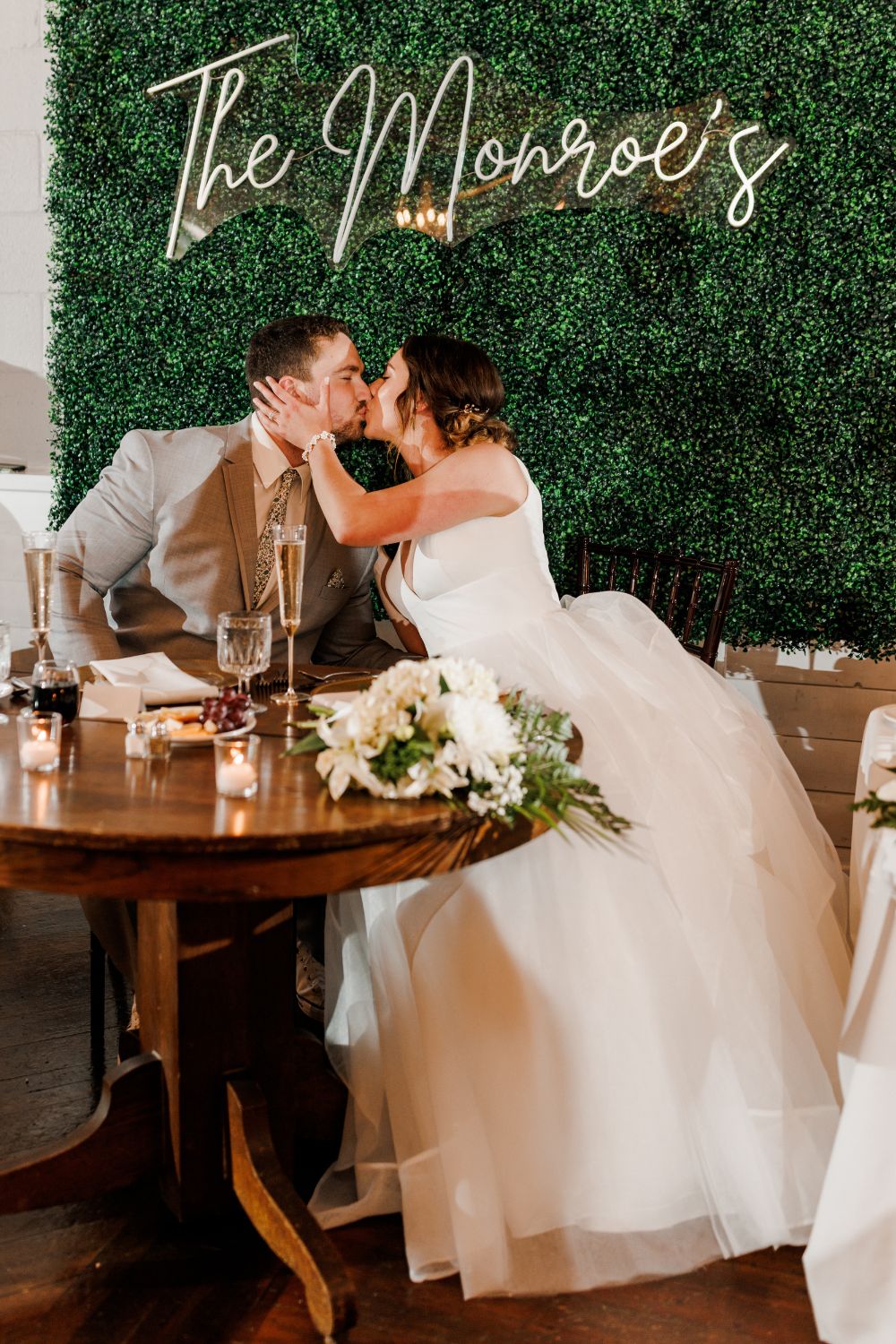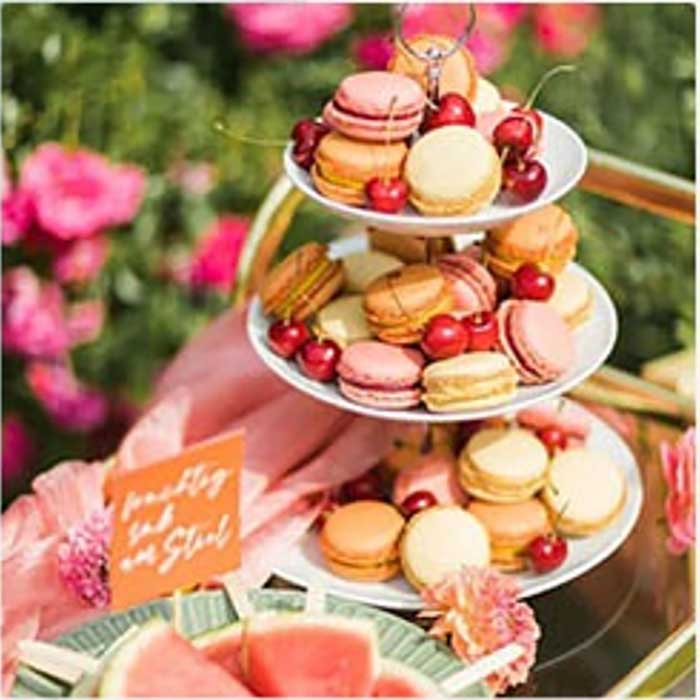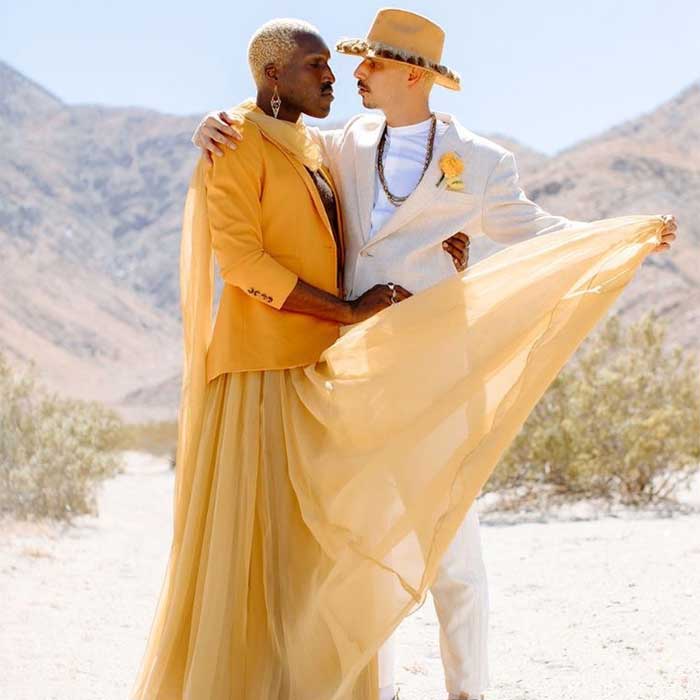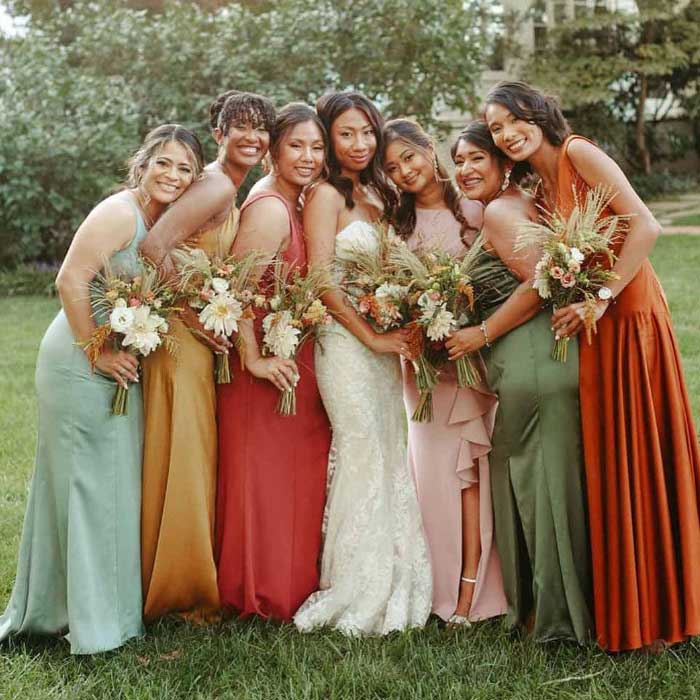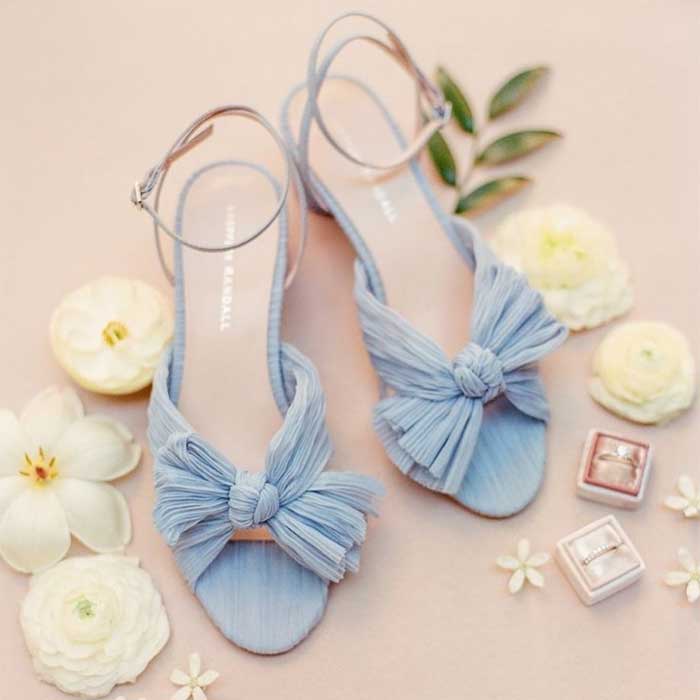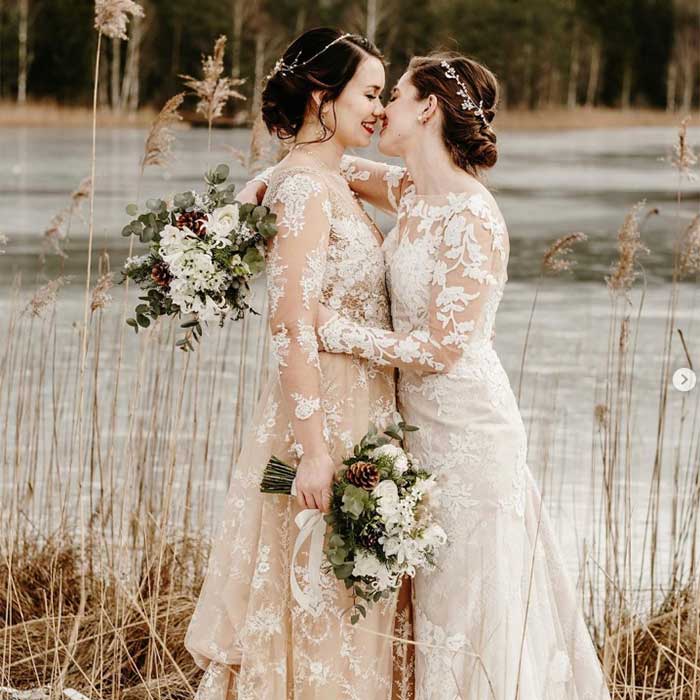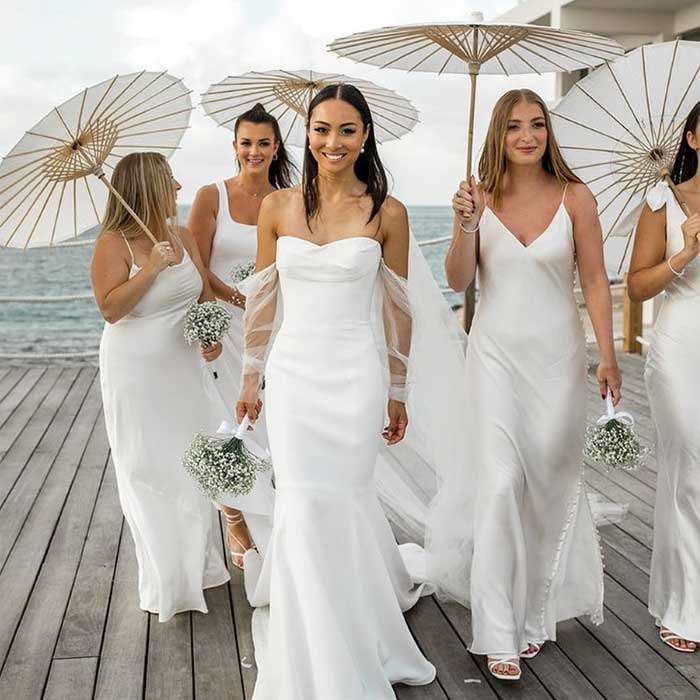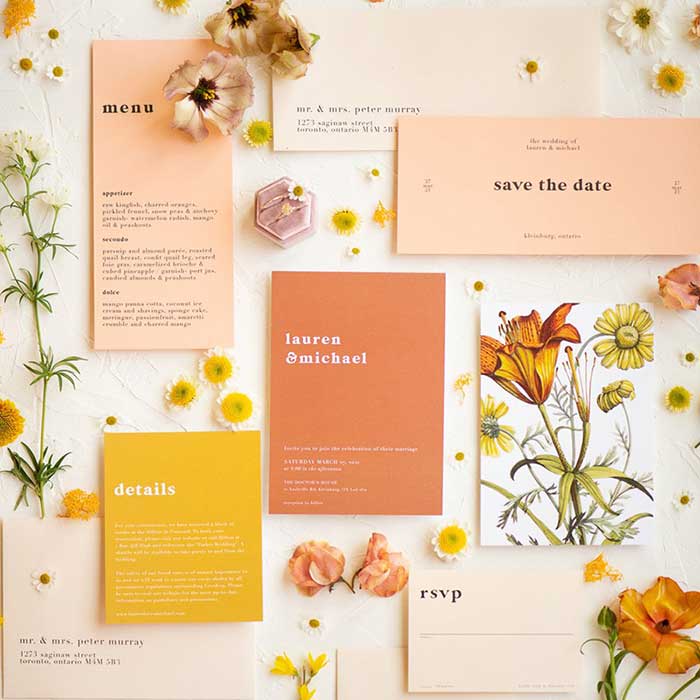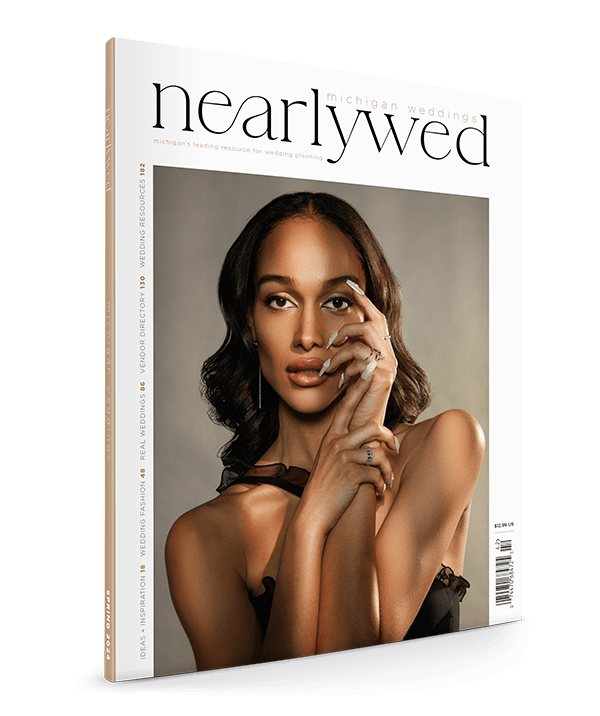Tips for Pairing a Veil with Your Wedding Dress
Picking out your veil is just as important as picking out your dress. A wedding veil is an accessory that can elevate your wedding look. There are so many styles of veils ranging from face framing to floor-skimming that it can become overwhelming when trying to choose the right one. Don’t worry. We have put together helpful tips for pairing a veil with your wedding dress. But first, let’s talk about the different lengths of wedding veils!
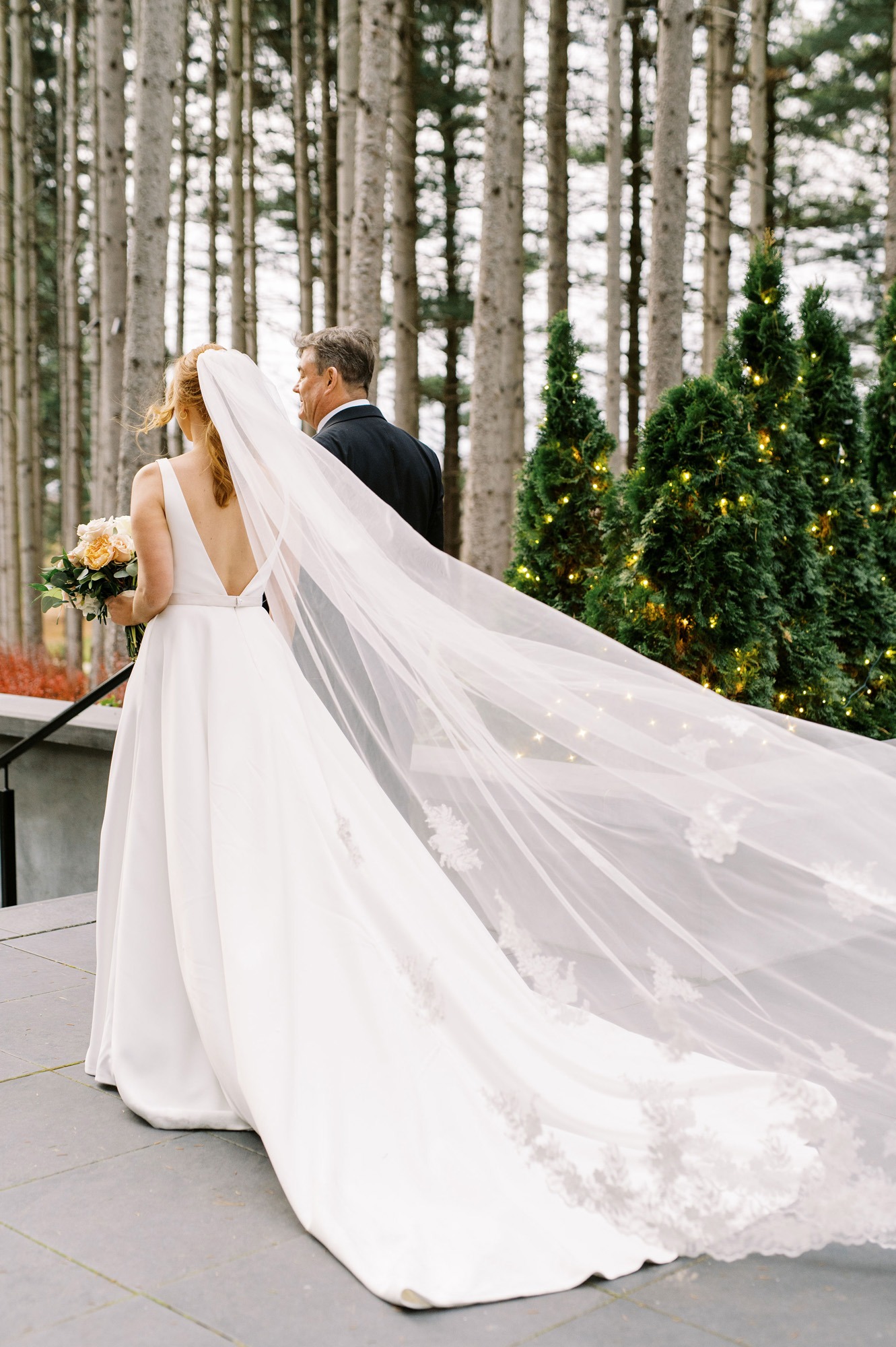
Photo by Samantha Leigh Studios
Wedding Veil Styles
There are so many different types of lengths for wedding veils.
Birdcage (4-9 inches): This type of veil can either cover the eyes, skim the nose or hit at the jawline. Birdcage veils are normally made from net or lace. This style offers a super flirty look.
Shoulder Length (20-22 inches): This veil style hits just at the shoulder, like the name says. They are a great option for a traditional veil that doesn’t take away anything from the dress.
Blusher (30 inches): A blusher is a veil that falls over the face and ends near the top of the dress. On longer veils, it’s the part of the veil that covers the face of the bride until it is pulled back during the ceremony to reveal the bride.
Elbow (32 inches): Just like the name suggests, an elbow veil falls over the shoulders of the bride and ends at the elbows. It is a great option for a more conservative look if you want to cover up without having to wear a shrug.
Fingertip (38-40 inches): A very popular veil style that falls below the bride’s hips, fingertip veils allow the back of the wedding dress to be shown through the sheer fabric.
Knee Length (48 inches): This veil style lands at your knees and is meant to add a bit of drama and glam without weighing you down. Depending on your height, it can be adjusted to land above, below or just at your knees.
Waltz (60 inches): A waltz veil is meant to land about mid-calf. It’s for brides who want a longer veil but want to have the freedom to move around during the reception while still wearing it.
Floor Length (72 inches): For the bride who is torn between a ball gown or a more sleek silhouette, a floor-length veil can help add more volume to the overall wedding look. The veil just grazes the floor and should be the same length as the bridal gown.
Chapel (90 inches): A chapel veil helps create the illusion of a train that sweeps across the floor slightly extending the length of the dress.
Cathedral 108-120 inches: This veil is for the bride who wants to make a dramatic entrance down the aisle as it extends much longer than the bride’s dress.
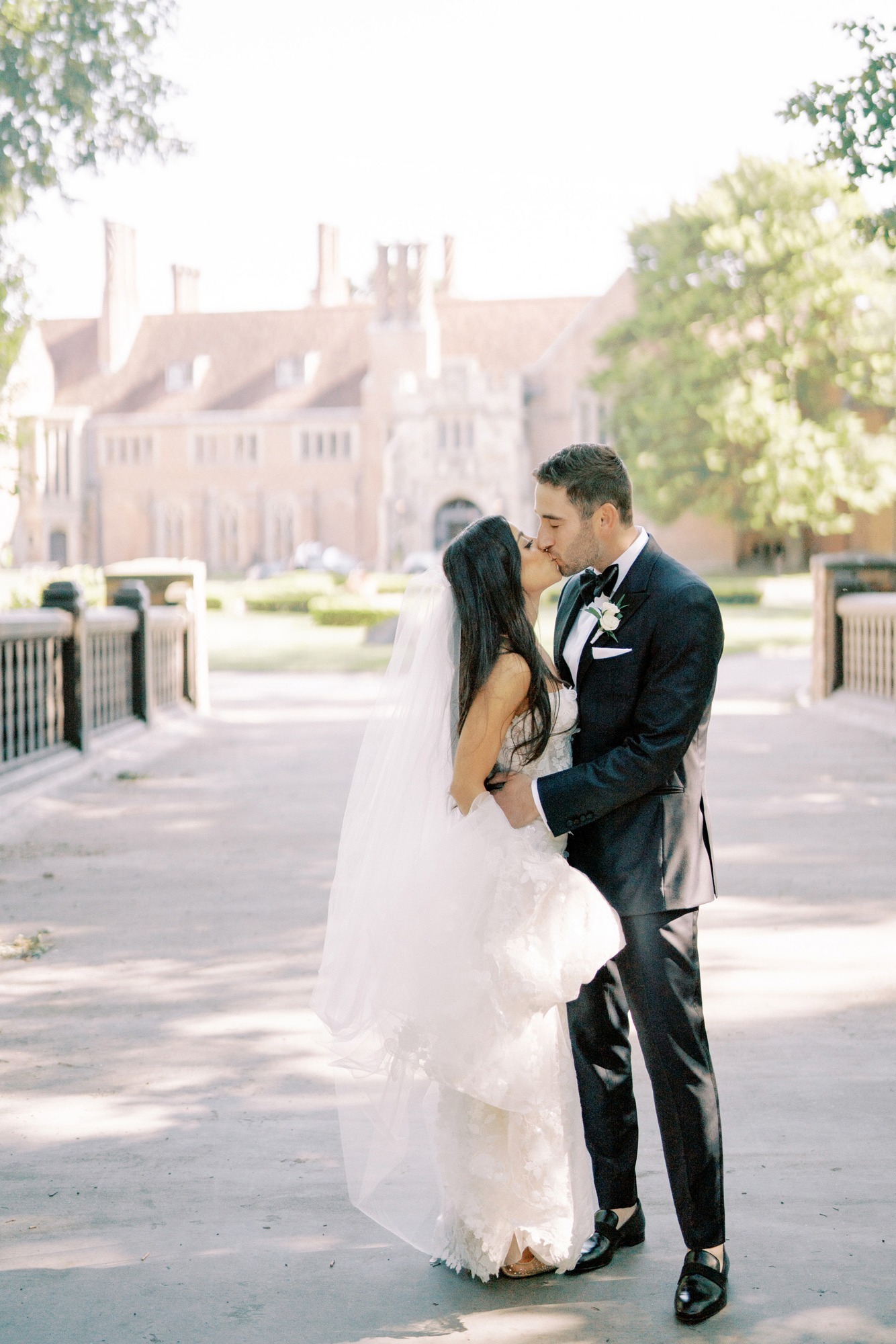
Photo by Blaine Siesser Photography
Tips for Pairing a Veil with Your Wedding Dress
Budget: Veils may not seem like they should cost a lot of money since they are just a flimsy piece of fabric, but sometimes veils can cost more than the dress! Simple veils can range from $200 to $300, while more extravagant veils can cost more than $3,000! It is important to know how much you want to spend so you can choose options from your price range.
Your Wedding Dress: The best place to start for finding the right veil is the style and shape of your wedding dress. Your veil should be proportionate to your dress and also accentuate it. You don’t want a veil that is too overpowering and takes away the beauty of the dress. This means nothing distracting to interrupt the flow of the overall look. Try on a bunch of different styles with your dress to play around with different looks.
For example, if your dress has a lot of details, it is best to pick a simple veil with clean lines. If your dress is simple, pick a veil that has elaborate details such as lace or floral accents and embellishments to add depth to your gown.
Another good idea is to see if there is any good focal point on your dress to use as a guide when picking out a veil. A veil will look its best when it’s cut just above or below any horizontal lines. For example, if the veil falls just where the focal point begins, like a defined waistline, it has the effect of visually cutting you in half.
Dress Silhouette:
- Sheath — Slim-fitting wedding gowns work beautifully with longer veils. Gowns without a train or a short train look gorgeous with a floor-length or chapel-length veil. The veil should be slightly longer than the hem or the train of your gown. Some other great veil options for sheath dresses include birdcage or fingertip veils if you want to go the shorter route.
- Trumpet/Mermaid — Long and narrow veils will complement trumpet or mermaid-style dresses. Or you can opt for mid-length or birdcage veils to show off the gown’s skirt.
- A-Line — When it comes to veils and A-line wedding dresses, it is all about proportions! To show off the bodice, choose from chapel, waltz or fingertip lengths.
- Full Skirts — Mid-length veils are the most popular choice for full-skirt wedding gowns. Anything from hip-length to fingertip veils works well too. If you are not afraid to carry around your veil after the ceremony, pick a chapel or cathedral-length veil. If you end up deciding on a mid-length veil, make sure the veil fails at least 3 inches below the back neckline of the dress.
When in doubt, fingertip veils are a timeless option that work with all different styles of wedding gowns. Plus it works with most venue types.
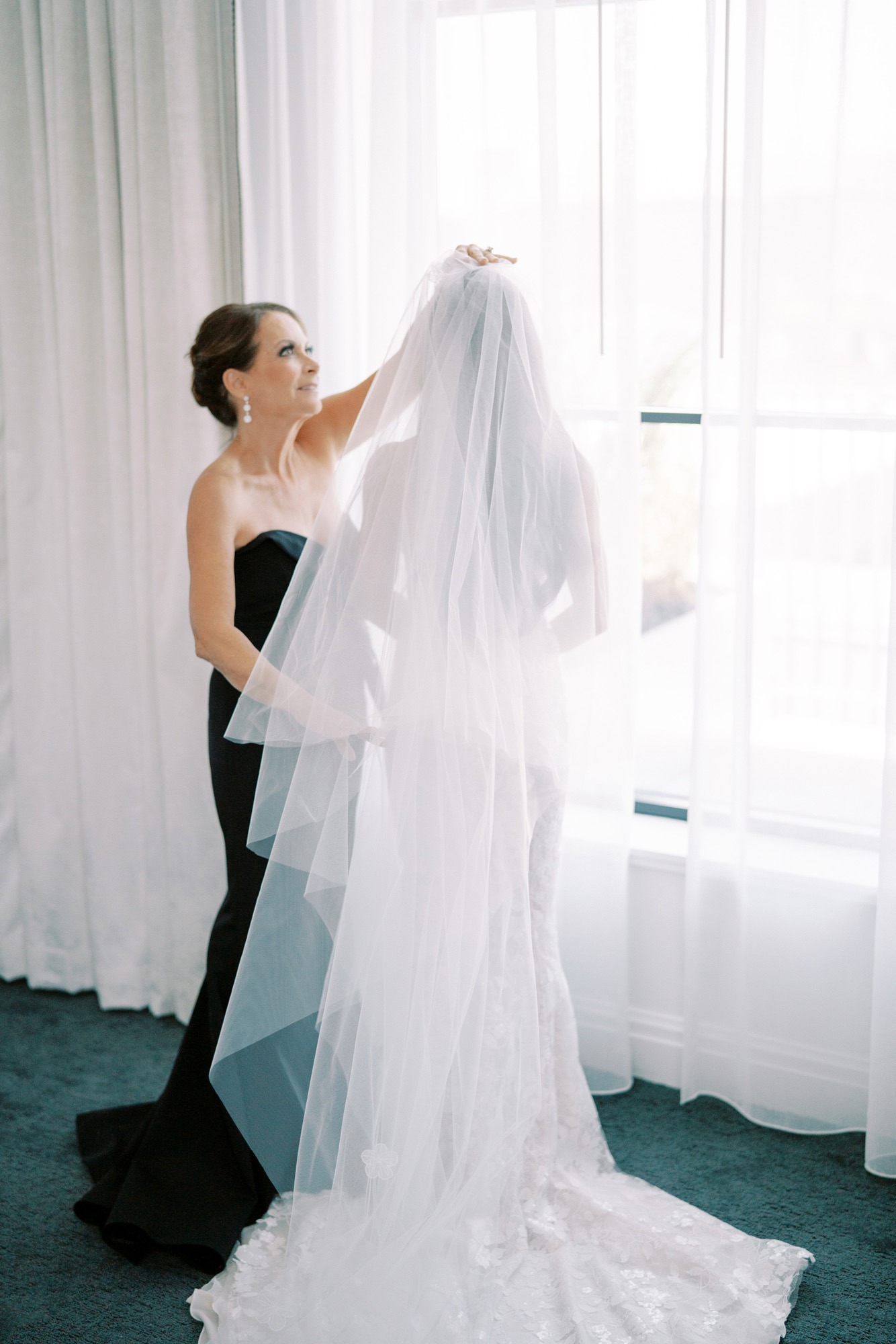
Photo by Blaine Siesser Photography
Venue
Just like how your wedding dress depends on how formal your wedding is, the veil should also reflect on the formality. Some church weddings require a bride to wear a veil with or without a blusher. Be sure to check with the church if that is where you are getting married. For less formal weddings, a chapel veil or shorter will work.
Hairstyle
The hairstyle you wear on your wedding day is an essential factor when choosing your veil. If you end up deciding to wear a veil, the veil will most likely need some support, either with a bun, updo, or half-up-half-down hairstyle. Remember the longer and heavier the veil, the sturdier the hairstyle needs to be.
One good thing about the most popular bridal hairstyles is that the veil can be made to frame the hairstyle from behind. Instead of a metal comb, veils can be customized with cotton loops so the hairstylist can easily pin the veil to the natural curve of the bun, updo, etc.
Important Factors: Your hairstyle and where the veil sits on your head will affect where the veil ends/falls. For example, if you have a bun and the veil sits above it, the veil will appear shorter. To order the right veil length, have someone measure on you where you’d like the hair comb to sit and where you want the veil to fall.
No matter what look you are going for on your big day, the right veil can enhance your wedding look. Hopefully, these tips for finding the right veil for your wedding dress can help you find the perfect one!
you might also like
Check Out The Latest on Instagram
Check Out The Latest on Instagram
Follow us on Facebook and Instagram for more tips, resources, and inspiration!


